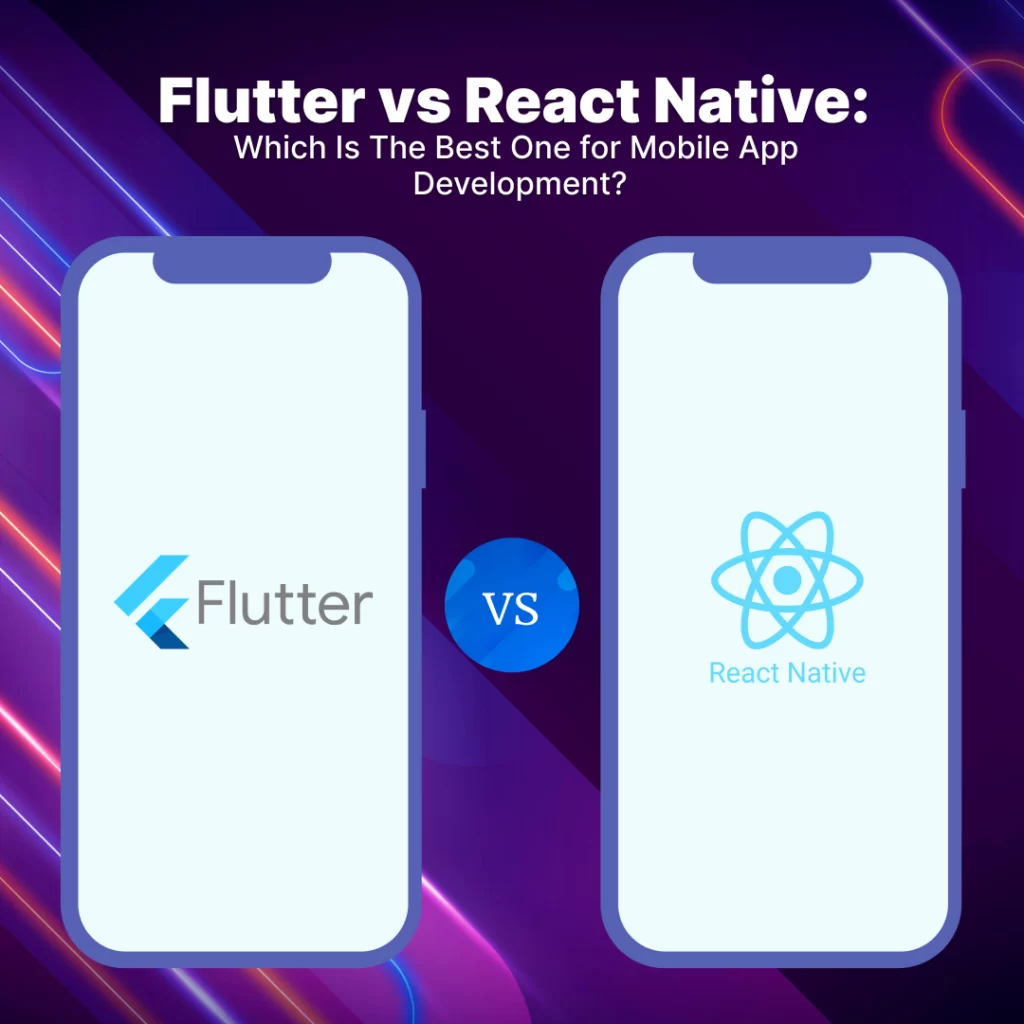Let's talk at +1 315.210.8558 | +91 120 4374402

Flutter vs React Native:
In today’s world, Mobile applications have improved on how companies do business and communicate with each other and even travel from place to place. It is clearly seen that now-days companies develop mobile applications for their own use and purpose.
At present there are numerous numbers of technologies to build a mobile application. Flutter and React Native are the two top mobile application development frameworks.
Before we elaborate on which is better Flutter or React Native, we need to understand about what they are actually.
Flutter is one of the open-source frameworks which functions with a language called Dart which is being created by Google. It is commonly shared as an enhanced User Interface toolkit that is used in building cross-platform applications with a single codebase. It is supported and contributed by certain Google developers and flutter community.
React Native is again anopen-source framework which runs on Java Script. It focuses on native rendering of apps which are compatible with both IOS and Android. React Native is written with the combination of XML -Esque markup and JavaScript known as JSX.
- For Year 2021 React Native is used by 38% of developers for building cross-platform application. (Source: Statista)
- 42% of the global population use Flutter to build cross-platform mobile applications. (Source: Statista)
- Development Tools and Documentation
- React Native is considered to have anokay documentation. It’s more focused on web developers who are well versed with JavaScript and has a few gaps. For instance, some of the key features like navigation aren’t well-documented. Its difficult to find information about building Native Libraries.
- Flutter has really good documentation as it offers detailed guides accompanied by graphics and video tutorials. The cool thing is that Flutter has various tools to assist you in application development including Flutter inspector.
• User Interface
Flutter has User Interface widgets packaged within itself, which means creating native-like applications is easy. There is no requirement to search for third-party libraries. Application on Flutter are consistent across all the mobile platforms.
React Native renders the native components for every platform. This feature allows for creating the look and feel of native Android and iOS apps. React Native has lots of ready-made components to use as building blocks.
• Performance
React Native leverages JavaScript to connect to native components via a bridge. As a result, the speed of development and running time is slower.
With Flutter, there is no interconnecting bridge for initiating interactions with the device’s native components are faster, improving the entire performance of the app.
• Popularity
React Native is widely adopted and is a more popular app development framework. React developers can quickly develop react native applications.
Flutter is kind of new, and has gained some attention of late, and is way behind in developer count.
• Job Prospects
As Per the industry standards, React Native developers have better job prospects.
On the other hand, Flutter developers, have few jobs at present but will see an increase in near future.
• Installation
Flutter is slower to install. To install this framework, you must download the binary for the specific platform you choose from GitHub. If you’re installing for Mac operating system, there’s even an additional step here – an additional.zip file that has to be downloaded and added as a Path variable.
With React Native the installation is quite easy and seamless using the node pack manager basis you have a good hand on the Java script.
• Development Time
Flutter framework lacks the support of many text editors and IDEs, which adds more time to the development process.
With React Native, JavaScript makes development easy and accessible for more web developers and web designers. React native is quite superior.
• Code Reusability
Flutter code base is a lot more reusable.Developers can simply define a single UI widget tree and then reuse the defined logic.
React Native framework will allow the developer to write the code once and apply it to every platform. But compatibility on every type of mobile app platform isn’t always guaranteed, often requiring developers to load a different set of components that work.These modifications can take a good chunk out of the overall development time and affect the application cost.

